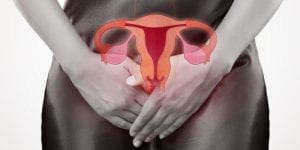A medical condition known as diminished ovarian reserve can have an effect on a woman’s fertility.
The ovaries play a vital role in the reproductive process. It is these organs that produce the eggs to hopefully be fertilized, which initiates the conception process and ultimately the birth of a newborn child.
Diminished Ovarian Reserve Defined
This condition, sometimes informally abbreviated as DOR, occurs when the quantity and quality of the eggs (oocytes) the ovaries produce decreases. This could significantly decrease a woman’s fertility levels.
Causes
There are several potential causes of DOR. As women age, their ovarian reserve tends to drop at incrementally until menopause, when ovarian function eventually ceases and oocytes are no longer produced.
However, the following might additionally precipitate this ailment:
- Infections of the Reproductive Tract – Infections that infiltrate reproductive organs like endometriosis and pelvic inflammatory disease could reduce egg production.
- Systemic Diseases – Various autoimmune diseases, as well as ailments such as mumps can precipitate the onset of DOR.
- Therapies/Medications – Women prescribed various medications, as well as those undergoing cancer treatment or therapeutic protocols for other diseases utilizing radiation or chemotherapy stand at greater risk of DOR.
- Other Issues – DOR can sometimes also be elicited by lifestyle vices like smoking, damage to the ovaries or genetic flaws. Furthermore, some cases might offer no explanation or discernible cause.
 Physical Manifestations
Physical Manifestations
Arguably, the most significant red flag symptom is difficulty becoming pregnant. Individuals who have actively been attempting to conceive for six months to a year to no avail might be stricken with the condition. Additionally, other potential manifestations that could indicate DOR’s presence include heavy or irregularly occurring menstrual cycles.
Diagnosis
Symptoms of DOR could, however, mimic a host of other reproductive ailments. Moreover, if certain precipitating conditions are left unchecked, there is a greater probability the afflicted subject becomes infertile. In many instances, doctors can detect the presence of DOR by performing simple blood tests designed to measure the systemic concentrations of various sexual hormones.
Like any other medical issue, earlier detection often precipitates better long-term results. Physicians and reproductive experts suggest that women under age 35 experiencing conception challenges for more than a year should seek a medical evaluation, while those 35 and older should wait only six months.
Potential Treatment Options
Specific therapeutic endeavors will be dictated by the specific underlying cause (if one is discernible), the severity of the cause and the afflicted individual’s age.
However, general treatment options might include the following:
- Hormone Therapy – Administration of a hormone called dehydroepiandrosterone, simply abbreviated as DHEA, has proven somewhat effective in stimulating the fertility levels of individuals afflicted with DOR. Studies have concluded that subjects who ingested this substance noticed a significant increase in pregnancies induced with medical assistance such as in-vitro fertilization (IVF) but also in patients receiving no medical assistance.
- Medical Assistance – Some women might choose to freeze their eggs for the purpose of undergoing IVF at a later date. During the IVF process, scientists fertilize the eggs using sperm inside a laboratory setting and insert the structures into a woman’s uterus with the hope that it will implant and that the woman will carry the fertilized specimen to term.
- Surrogacy – In certain cases, a woman’s healthy eggs might be retrieved, fertilized through IVF and then placed inside the uterus of another woman who carries the fetus to term, serving as a surrogate for the future mother.

 Physical Manifestations
Physical Manifestations


